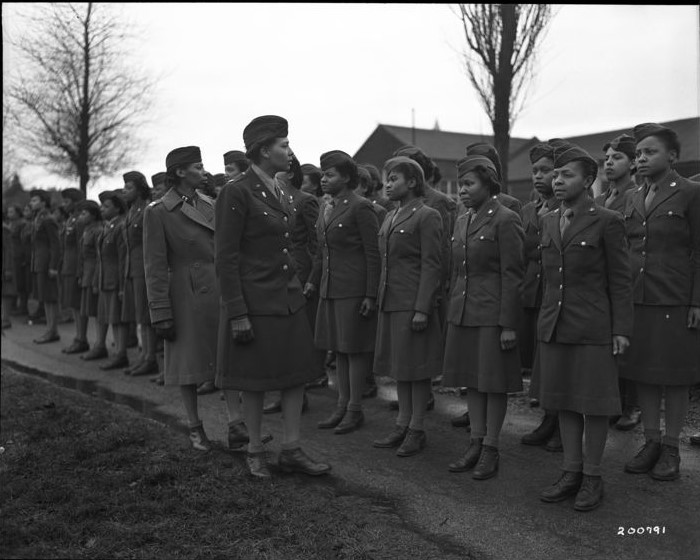
Women's Army Corps Officers Inspecting the 6888th Central Postal Directory Battalion, National Archives, https://catalog.archives.gov/id/531249
Black History Month is celebrated each February to acknowledge the significant contributions of African Americans throughout U.S. history. A theme is announced annually to guide our focus and reflection. This year’s theme is African Americans and Labor. Read on to discover resources that will support you in engaging and inspiring your students during Black History Month and throughout the year.
The National Education Association: Black History Month Lessons & Resources The National Education Association (NEA) offers teaching lesson materials conveniently organized by grade level. For adult learners, the Grades 6-8 and 9-12 resources are the most applicable. In addition, the NEA has provided some articles and a podcast episode at the top of the page to support teachers in preparing to teach Black history meaningfully.
The Smithsonian Learning Lab: National Museum of African American History & Culture The National Museum of African American History & Culture offers an extensive, curated collection of digital materials for teachers and learners. These materials include primary and secondary sources, many of which can be viewed on display in the museum’s various exhibits. To view the full library of digital resources, organized by historical topic, click on the gray “All Collections” tab at the top of the page. To access resources related to this year’s theme, African Americans and Labor, explore the museum’s Black History Month Digital Toolkit.
Facing History and Ourselves: The Reconstruction Era and the Fragility of Democracy This collection of teacher resources focuses on the Reconstruction Era in U.S. History. Many materials in this collection highlight key issues in Black history, such as voting and labor rights. For additional teaching resources about Black history curated by Facing History and Ourselves, click here.
Celebrating Black History with the New York Times The New York Times has curated a free resource list of articles, essays, photographs, videos, infographics, and more dedicated to Black history. Scroll to the section titled “Learning Network Lessons, Writing Prompts and Films” to find ready-to-use lesson materials.
28 Days of Black History Teachers can sign up to receive daily emails throughout February. These emails highlight the influence of Black people on US history and provide suggestions for how to learn more. Also included are discussion questions that can stimulate reflection and meaningful conversation with students that are aligned with the speaking and listening College and Career Readiness Standards for Adult Education (CCRSAE). Teachers can also encourage students to sign up for the emails to practice their digital literacy skills.
Black History in Two Minutes or so The YouTube channel presents short videos ranging from one minute to four minutes long that provide concise explanations of various Black history topics. Teachers may use these videos to inspire classroom discussion and develop writing prompts that align with ELA Standards.


